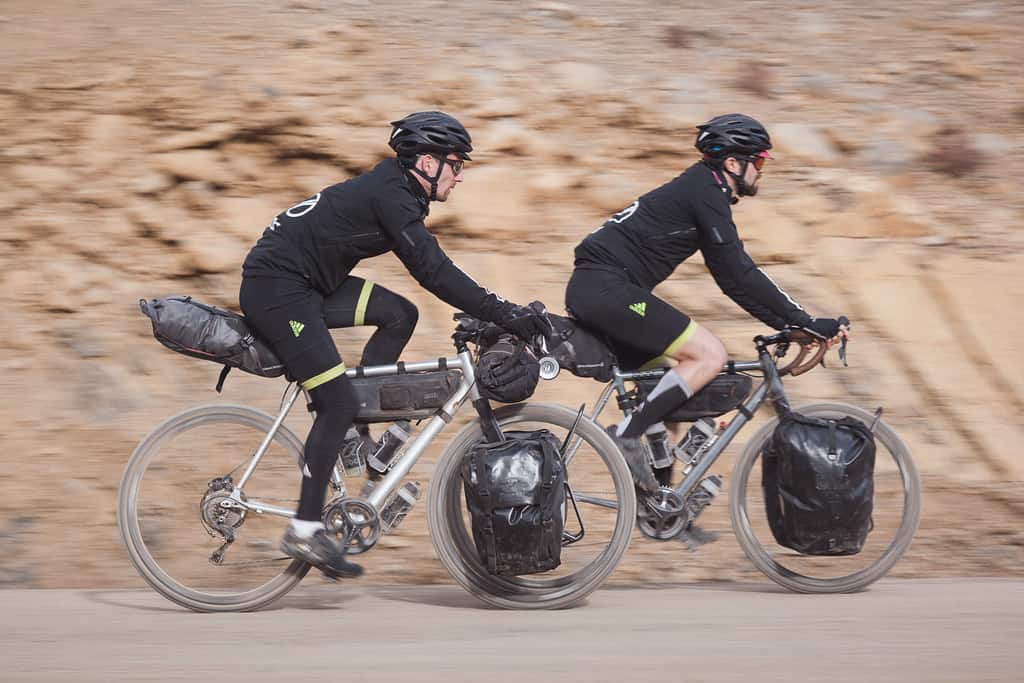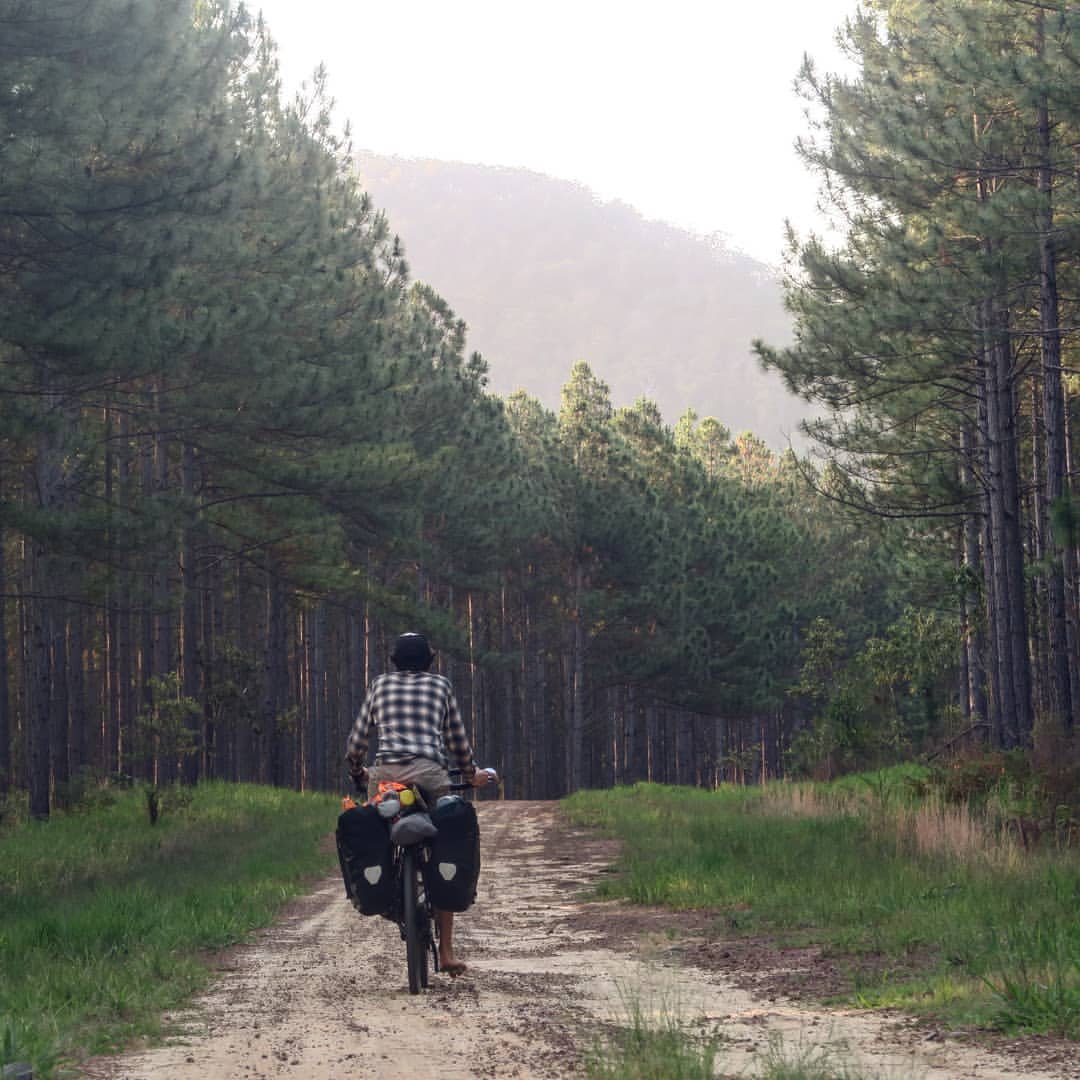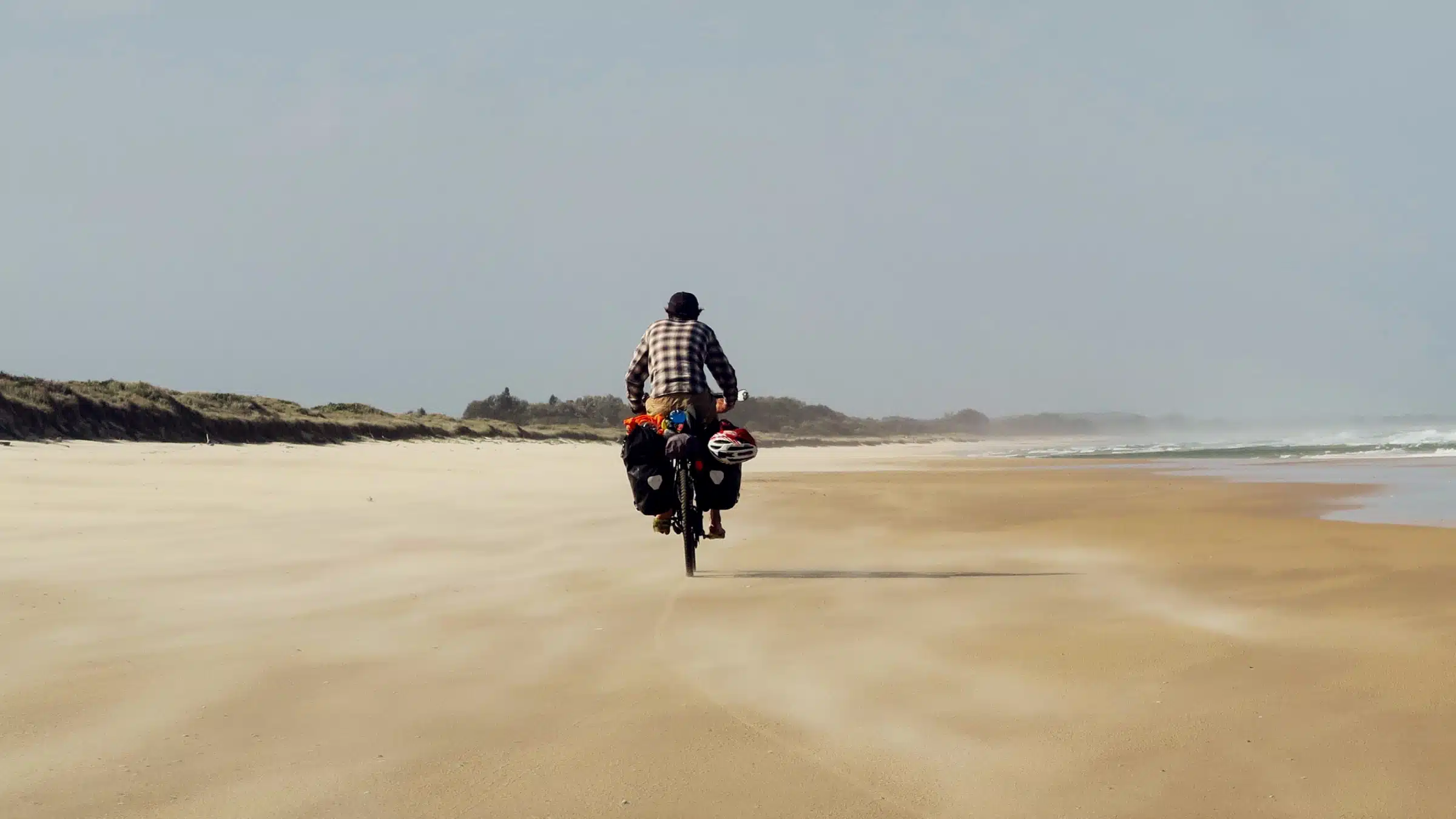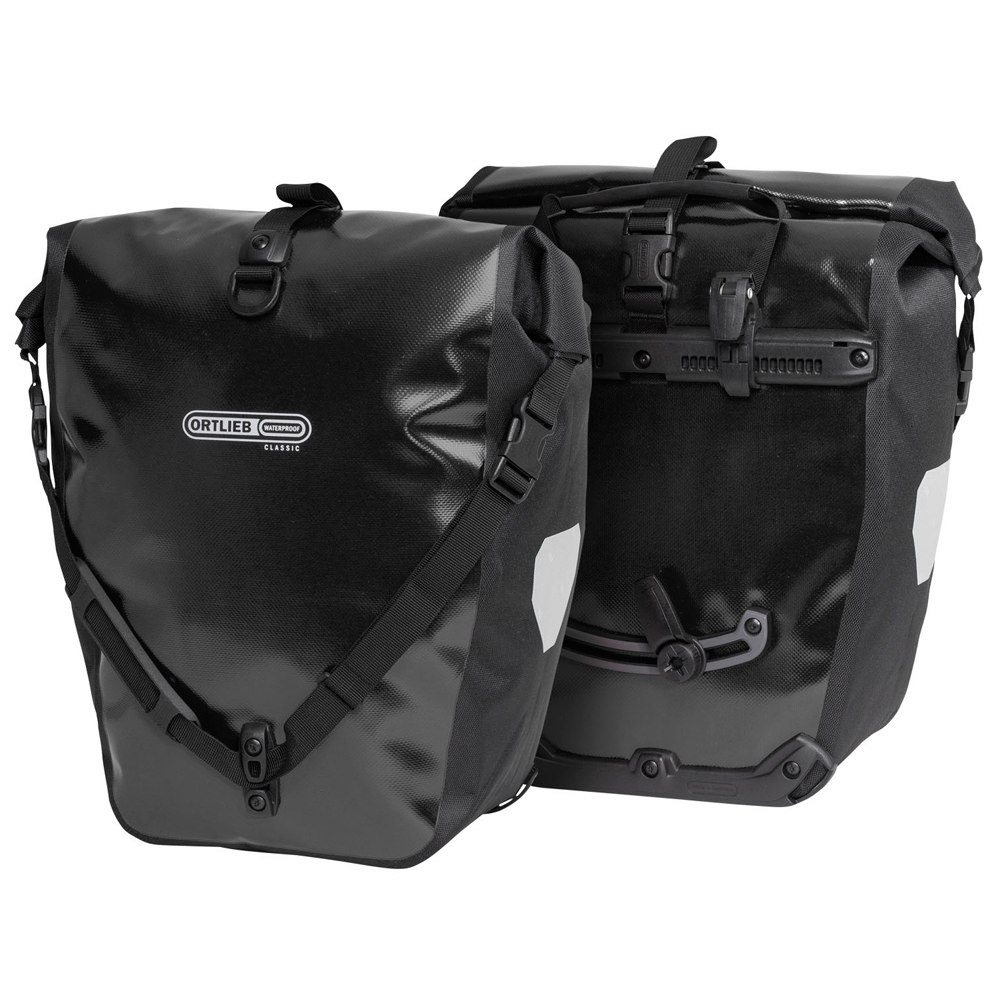Updated: 16th November 2023
Struggling with finding the right panniers for your cycling needs?
In this blog, we delve into the world of bike panniers, from sturdy touring options to sleek micro bikepacking choices, including alternative carrying solutions for those who prefer a minimalist setup.
With years of experience in adventure cycling, we at Cycle Travel Overload have assisted countless cyclists in selecting the perfect gear for their journeys. We don’t just list products; we share insights gained from real-world testing and personal experiences with gear like our trusty Ortlieb Classic panniers.
Why are you seeking panniers? Whether for daily commuting, extended touring expeditions, or wilderness bikepacking adventures, we’ll guide you through what to look for, fitting options for your bike, and the best panniers tailored to various uses. Plus, we’ll explore the pros and cons of using panniers versus other bikepacking bags.
Why Bike Panniers are Essential: Whether you’re a daily commuter, an extended touring enthusiast, or a wilderness bikepacker, we guide you through selecting the perfect panniers. We’ll explore the pros and cons of using panniers versus other bikepacking bags. And much more.
Note: Purchasing any of these bike panniers through our affiliate links helps support Cycle Travel Overload at no extra cost to you, enabling us to create more valuable resources for the bike travel community.
Let’s get straight into the best bike pannier options and then we can dive deeper into how to select the best panniers for your cycling needs.
Types of Bike Panniers Quick List:
- Best Panniers for Bike Touring: Ortlieb Back-Roller Classic Panniers – Known for their durability and waterproof capabilities, ideal for road touring.
- Best Backpack Panniers: Two Wheel Gear Pannier Backpack Convertible Plus 2.0 – A versatile option for urban cyclists with a dual pannier-backpack functionality.
- Best Pannier for Bikepacking: [Brand and Model] – Designed for bikepackers needing extra storage without compromising on agility.
- Best Pannier for Grocery Shopping: [Brand and Model]
- Best Pannier for Commuting with a Laptop: [Brand and Model]
- Best Gravel Bike Pannier: [Brand and Model]
- Best Messenger Bag Pannier: [Brand and Model]
- Best Cargo Bag Pannier: [Brand and Model]
Ortlieb Back-Roller Classic Panniers
Best Panniers for Bike Touring
The Ortlieb Classic Panniers reign supreme in the touring pannier market, known for unparalleled durability and exceptional waterproof capabilities. These panniers are a testament to longevity, with many cyclists using the same set for over a decade, and some even stretching beyond 20 years of rigorous touring.
I personally vouch for these panniers, having relied on them for numerous extended tours. Their robustness is unmatched, though they do require occasional tightening of the internal screws.
While some may worry about the plastic components, in my experience, the primary concern is the plastic clips. They might break now and then but don’t render the pannier unusable and are easily replaceable.
A minor issue with the Ortlieb Classics is their tendency to rattle, especially when the front hook loosens, causing movement. A simple fix can be to add an extra hook in the opposite direction, a technique Ortlieb themselves employed in their bikepacking-focused Ortlieb Gravel Panniers. Note that frequent gravel riding might contribute to this issue, suggesting a potential switch to the Ortlieb Gravel model for such terrain.
The main hook inserts can occasionally get lost due to regular wear, leading to a looser fit. These inserts are easily replaceable, or you can use PVC piping on the rear rack rails as a workaround.
For those planning to traverse rough off-road trails, be mindful that these panniers might bounce or even come loose on particularly harsh terrains. Pairing them with Tubus racks can significantly reduce this risk. But that is why we recommend these as the best ‘road’ touring bike panniers. If you want something more suited to off-road adventures, consider the bikepacking panniers.
Two Wheel Gear Pannier Backpack Convertible Plus 2.0
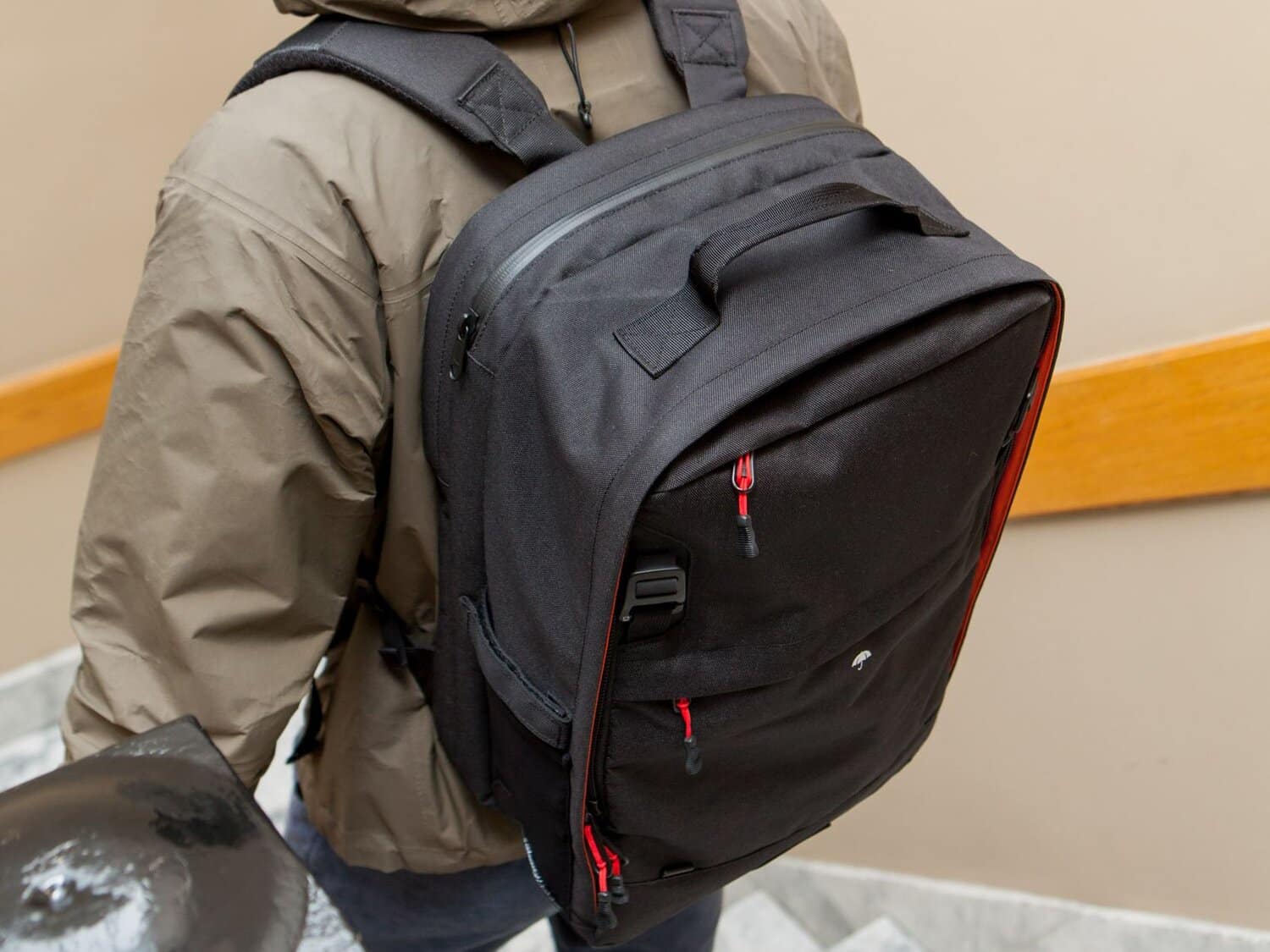
Best Backpack Panniers
The Two Wheel Gear Pannier Backpack Convertible Plus 2.0, priced at $225.00, is a testament to versatility and functionality, catering to the dynamic needs of urban cyclists. My experience with this pannier backpack over several months of testing has allowed me to deeply appreciate its well-thought-out features and design.
One of the standout aspects of this backpack is its variety of color options, catering to personal style preferences. What impresses me the most is its dual functionality; it seamlessly transitions from a reliable pannier to a comfortable backpack. We also reviewed a number of other backpack panniers. Even when loaded to its full capacity, the backpack sits comfortably on the shoulders, a crucial feature for cyclists who often carry heavy loads.
An integral part of its design is the fluorescent rain cover, which provides substantial protection during heavy downpours, ensuring the safety of the contents. The adjustable pannier hooks are a smart addition, offering compatibility with almost any rack – a feature I found particularly useful during my test rides across different bikes.
However, there are a few areas where the backpack could see improvement. Weighing 1.44 kg, it is on the heavier side, which could be a concern for cyclists who prefer a lighter load. The absence of a charging port between the outer pockets and the main compartment is noticeable, especially in today’s tech-driven world. I also noticed that the positioning of the light loop might cause attached lights to sag, potentially affecting visibility in low-light conditions.
Best Pannier for Bikepacking
During my testing and collaboration with OMM, I was particularly impressed by their commitment to quality and functionality. After using their rack systems for some time. These micro panniers are a game-changer for bikepackers who need extra storage but don’t want to compromise on agility and handling. The thoughtful design and rugged construction make them suitable for the most challenging terrains, while their lightweight build ensures they don’t weigh you down.
These Micro Panniers are an excellent choice for bikepackers seeking a compact, durable, and efficient way to carry gear. They successfully bridge the gap between the minimalism of bikepacking bags and the storage capacity of traditional panniers, making them a versatile option for a wide range of adventures.
Best Pannier for Grocery Shopping
Best Pannier for Commuting with a Laptop
Best Gravel Bike Pannier
Best Messenger Bag Pannier
Best Cargo Bag Pannier
How to Choose the Best Panniers? What to look for in bike panniers?
Waterproofing
Waterproofing is paramount, particularly for those embarking on long journeys or cycling in unpredictable weather. A waterproof pannier safeguards your belongings from rain and road splash, ensuring everything from electronics to clothing stays dry. Ensuring your trip maintains some sanity with dry clothing after a hard days ride.
Waterproof vs. Water-Resistant: Fully waterproof panniers, like the Ortlieb Classic Panniers, are essential for long tours in variable weather, while water-resistant options might suffice for fair-weather commuting.
Protection for Valuables: Consider putting valuable items in separate waterproof bags inside non-waterproof panniers for added safety.
Personal Experience: Having used waterproof panniers for various tours. The robust material and roll-top closure system of such panniers effectively prevent any water ingress, a feature that has been a game-changer in heavy downpours.
Bag Volume
Trip Duration and Purpose: The length and type of your trip dictate the volume you need. For instance, smaller panniers may suffice for short trips, whereas longer expeditions might require a full four-pannier setup.
Capacity Management: Learn to live with less; the bigger the pannier, the more likely you are to fill it with non-essential items. Carrying everything you have with you under your own human power, teaches you to be content with less, as having more is often a burden.
Personal Experience: Having this mentality going into a trip is paramount. As in the past I have fully loaded my panniers at the start of my journey leaving not much room as I travel. I recommend packing your panniers till 2/3 of the way full. To allow for fluctuation and freedom. Full panniers = full mind. And you don’t want that! On my longer trips, spanning 1 to 3 months, the capacity of the Ortlieb Classics (20 liters each) proved sufficient for all my essentials, including camera gear. Their spaciousness, without encouraging overpacking, has been ideal for such extended adventures.
Pannier Hardware
Durability and Functionality: The hardware of your pannier – the hooks, clips, and mounting system – plays a critical role in the overall functionality. It’s vital for the pannier to attach securely to your bike rack, withstand the rigors of travel, and be easy to detach when needed.
Attachment Systems: Consider the type of attachment system, like the bungee hook style for a more traditional approach or systems like Arkel’s Cam-Lock Hook Kit for modern panniers.
Ease of Access and Organization
Compartmentalization: Multiple compartments aid in organizing gear efficiently.
Closure Systems: Choose between roll-top closures for waterproofing and zippers or flaps for easy access.
Personal Experience: Learning how to pack your panniers comes with time. As you travel you will figure out where you should pack everything and devise a packing system. A place is established in each bag and pannier, as you discover which gear you use more often, therefore requiring easier access. I often pack my camping gear underneath other gear that I would use throughout the day for example.
Compatibility and Versatility
Bike Fit: Ensure the pannier fits your bike and doesn’t hinder riding.
Modular Design: Some panniers offer modularity for added versatility.
Convertible Panniers: Convertible designs work well for those who need multi-functionality, like switching between biking (pannier mode) and walking (backpack mode).
Security Features
Lockable Panniers: Consider lockable panniers for urban environments.
Visibility: Reflective materials enhance safety in low light.
Comfort and Handling
Weight Impact: Check how the pannier’s weight affects bike handling and balance.
Aerodynamic Design: Sleeker designs can be advantageous for long-distance touring.
Eco-Friendly Options
Sustainable Materials: Eco-friendly options are available for environmentally conscious cyclists.
Price and Warranty
Cost-Effectiveness: Balance your budget with the quality and features you need.
Warranty Coverage: A solid warranty can be a significant advantage in the long run.
Brand and Reviews
Brand Reputation: Consider the brand’s track record and reliability.
User Feedback: Read reviews for real-world insights and experiences.
Pros and Cons of Using Panniers:
Advantages
- Storage Capacity: Panniers offer ample space, allowing you to carry more gear and provisions.
- Easy Access: Suitcase-style openings make finding and organizing items straightforward.
- Versatility: Suitable for a range of trips, from short commutes to lengthy expeditions.
Disadvantages
- Potential for Overpacking: Large capacity might lead to carrying unnecessary items.
- Handling and Aerodynamics: Panniers can affect the bike’s handling and increase drag, especially when fully loaded.
- Off-Road Limitations: Not ideal for rough terrains as they can bounce and rattle.
Intended Use for Panniers:
Daily Commuting
Compact and Functional: Smaller panniers suffice, focusing on ease of access for daily essentials like laptops and work materials. Can you ride with only one panniers?
Bikepacking
Balancing Capacity and Agility: Opt for ‘micro’ or ‘mini’ panniers that offer enough space without compromising the bike’s handling on challenging terrains.
Long Bike Touring Trips
Maximizing Space: Larger panniers are necessary for extended tours, providing enough room for all necessary equipment and personal items.
Fitting Panniers to Your Bike:
Rack Compatibility
Choosing the Right Rack: Ensure the rack is compatible with your pannier’s attachment system. Strong steel racks are recommended for heavy loads and durability.
Mounting Considerations
Secure Attachment: Look for racks with multiple attachment points to distribute weight evenly and reduce movement.
Load Distribution: Properly positioning panniers on the bike is crucial for balance and handling, especially on long journeys.
Conclusion:
Selecting the right bike panniers is a critical decision that directly impacts your cycling experience. Whether you’re an urban commuter, a weekend explorer, or a long-distance tourer, the right panniers can make a significant difference. Consider factors like waterproofing, volume, and hardware, alongside the specific demands of your cycling activities. Remember, the best pannier is the one that fits your personal needs and enhances your journey on the road. Make informed choices and enjoy the ride!
Check Out Our Other Articles On Bike Bags:
- Best Rear Bike Bags and Trunk Bags
- Best Bikepacking Cargo Cages and Dry Bags
- Best Bikepacking Frame Bags
- Best Top Tube Bags
Frequently Asked Questions
What are Bicycle Panniers?
Bicycle panniers are specialized bags designed to attach to the sides of a bicycle, typically on a rack over the rear or front wheels. They are used for transporting personal items, groceries, gear for touring, and other necessities while cycling. Panniers come in various sizes and designs, catering to different types of cyclists, from commuters to long-distance tourers. They offer a convenient and balanced way to carry loads, significantly increasing a bike’s carrying capacity without overly affecting its handling.
Do I Need Four or Two Panniers for Bicycle Touring?
The number of panniers needed for bicycle touring depends on the length of your tour, the amount of gear you need, and personal preference. Two panniers, typically mounted on the rear rack, are often sufficient for shorter trips or for cyclists who pack light. Four panniers, with two on the front and two on the rear, provide greater capacity and better weight distribution, ideal for longer, self-supported tours where more gear and supplies are required. Using four panniers can also improve bike stability, but it’s important to avoid overpacking to keep weight manageable.
How Do You Attach Bike Panniers?
To attach bike panniers, first ensure you have a suitable rack on your bike. Most panniers have hooks or clips on the back, designed to securely fasten onto the rack. Start by positioning the pannier above the rack and hooking the top hooks over the rack’s rails. Then, secure any lower attachments or straps to prevent the pannier from swinging or bouncing while riding. Some panniers come with adjustable hooks to fit different rack sizes. Always double-check that the pannier is securely attached before starting your ride.
Are Bicycle Panniers Waterproof?
Many bicycle panniers are designed to be waterproof or water-resistant, making them suitable for use in various weather conditions. Waterproof panniers are typically made from materials like treated nylon or PVC and often feature roll-top closures to keep water out. These are ideal for touring in unpredictable weather or for commuting in rainy climates. Water-resistant panniers can handle light showers but might not provide full protection during heavy rain. It’s important to check the product specifications to determine the level of water protection offered.
Are Bike Panniers Universal?
While many bike panniers are designed to be as universal as possible, fitting a wide range of racks, there can be variations in attachment systems and sizes. It’s crucial to check the compatibility of a pannier with your bike’s rack, especially if the rack is non-standard in size or design. Some panniers come with adjustable or universal mounting systems, enhancing their compatibility. However, specific panniers might be designed for certain types of racks or bikes, such as touring bikes, road bikes, or fat bikes, so it’s always a good idea to verify fitment before purchasing.
